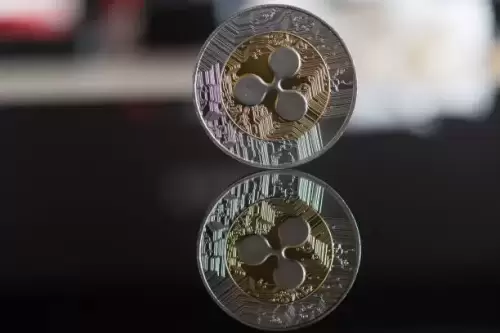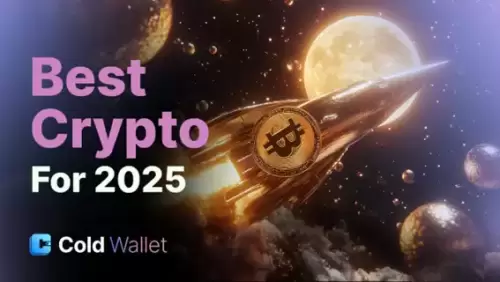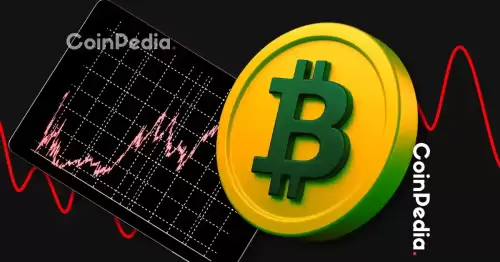 |
|
 |
|
 |
|
 |
|
 |
|
 |
|
 |
|
 |
|
 |
|
 |
|
 |
|
 |
|
 |
|
 |
|
 |
|
Cryptocurrency News Articles
Aptos Tokenomics Explored: Pre-Sale Valuation Gaps and Vesting Schedules Can Doom Even Great Projects
May 24, 2025 at 10:00 pm
This is a guest post and opinion of Arthur Iinuma, Principal consultant and Founder of Iinuma.io. While good tokenomics cannot save unsound projects
The following is a guest post and opinion of Arthur Iinuma, Principal consultant and Founder of Iinuma.io.
While good tokenomics cannot save unsound projects, even the most promising network launches can fail from poor token design.
Spectacular flameouts like Terra LUNA and Celsius expose the dangers of financial sleight-of-hand—algorithmic stablecoins and yield schemes masquerading as innovation. But there are many more otherwise high-potential projects committing economic suicide through easily avoidable mistakes.
Blue-chip projects with genuine technical merit and legitimate use cases, like Aptos, have watched billions in market cap evaporate overnight due to mismanaged token unlocks and poor communication. It’s critical for crypto founders to increase their emphasis on token design so great projects can build economic foundations as strong as their technical ones.
Fatal Flaws in Token Design
The biggest tokenomics mistakes I see in otherwise solid projects are:
Large Valuation Gaps
While it is customary for projects to offer early investors lower priced tokens compared to later rounds, founders should be careful in allowing wide pricing spreads between these early rounds and public buyers.
This may be easier said than done as shrewd investors demand lower prices against the threat of withholding investment. However, an investor with a low entry price in comparison to a later round essentially guarantees their upside even at prices lower than the cost basis of a public buyer. This means that a loss for buyers in later rounds may still result in gains for the earliest token holders – creating an unfair imbalance in the project’s token economy.
Poor Vesting Schedule
Far too many projects turn their public buyers into exit liquidity for early investors and insiders. Nothing destroys community faster than watching early insiders dump tokens while public buyers hold withering bags.
The timing of unlocks is also pivotal. While a long vesting and lockup schedule seems good for value appreciation, they almost always guarantee predictable sell pressure as investors who’ve been forced to hold for too long scramble to unload. Fast unlocks may provide rapid price discovery and expand the token holder base, but they also allow whales to dump, creating “red candles” and evaporating public confidence.
Overselling by Founders
Sometimes the prospect of turning recently minted digital tokens into real value is too tempting for the founders who created them. I’ve watched projects go from great ideas to publicly traded at over a billion USD in valuation, minting multi-millionaire founders in the process. Even the most disciplined of them are tempted to sell their holdings and trade their project tokens for cash.
Take for instance Mantra, which suddenly lost 92% of its value in just 90 minutes. Despite statements by the CEO to the contrary, blockchain analysts were quick to identify substantial insider movements of at least USD 227 million onto exchanges, suggesting an insider dump.
High Listing Valuation
Founders are often enticed to list at larger valuations as they make for bigger headlines, raised optics and build hype. Founders are not entirely at fault here, as even Binance has been known to push out unusually high listing valuations, with projects like Hamster Kombat (HMSTR) listing at over USD 700 million in market cap, and Notcoin listing at a staggering USD 1 billion at launch.
But overvalued project listings create a lot of “air” underneath them, and when everyone is in the money, it’s almost a guaranteed race to the bottom and token holders are quick to cash out to get more favorable pricing than the person next to them. A high starting valuation also means the prospect of public buyers earning a multiple on their investment is slimmer, thinning out secondary market demand. When you have a lot of holders selling and nobody to buy, the result is an eventual death spiral.
While projects like Hamster Kombat set industry engagement records, and listed on the top exchanges in the world, its overvalue at listing resulted in a 87% price decline to its recorded all-time-low.
What Actually Works in Tokenomics
BTC and ETH hold the top market cap positions for good reason. Beyond being early, they’ve demonstrated several core principles that separate sustainable token models from hollow speculation vehicles.
Genuine Scarcity
Bitcoin’s 21 million fixed supply cap isn’t powerful just because it’s scarce—it’s powerful because the market believes with absolute certainty that this limit won’t change.
Deep Product Integration
The fundamental question every project should answer honestly: Could your product function without a token? If yes, you’re likely forcing tokenization where it doesn’t belong.
Projects like Filecoin embody this principle well—their token is essential to the network’s storage marketplace function, making it nearly impossible to separate the product from its token. By contrast, projects that bolt on tokens as afterthoughts typically see their tokens wither in value over time.
Selling Restrictions
Projects should structure valuations across each sale round with reduced spread and design a lockup schedule that prevents lower-priced buyers from “dumping” their tokens on participants in later rounds.
Disclaimer:info@kdj.com
The information provided is not trading advice. kdj.com does not assume any responsibility for any investments made based on the information provided in this article. Cryptocurrencies are highly volatile and it is highly recommended that you invest with caution after thorough research!
If you believe that the content used on this website infringes your copyright, please contact us immediately (info@kdj.com) and we will delete it promptly.






























































